- News
- Reviews
- Bikes
- Accessories
- Accessories - misc
- Computer mounts
- Bags
- Bar ends
- Bike bags & cases
- Bottle cages
- Bottles
- Cameras
- Car racks
- Child seats
- Computers
- Glasses
- GPS units
- Helmets
- Lights - front
- Lights - rear
- Lights - sets
- Locks
- Mirrors
- Mudguards
- Racks
- Pumps & CO2 inflators
- Puncture kits
- Reflectives
- Smart watches
- Stands and racks
- Trailers
- Clothing
- Components
- Bar tape & grips
- Bottom brackets
- Brake & gear cables
- Brake & STI levers
- Brake pads & spares
- Brakes
- Cassettes & freewheels
- Chains
- Chainsets & chainrings
- Derailleurs - front
- Derailleurs - rear
- Forks
- Gear levers & shifters
- Groupsets
- Handlebars & extensions
- Headsets
- Hubs
- Inner tubes
- Pedals
- Quick releases & skewers
- Saddles
- Seatposts
- Stems
- Wheels
- Tyres
- Health, fitness and nutrition
- Tools and workshop
- Miscellaneous
- Buyers Guides
- Features
- Forum
- Recommends
- Podcast
TECH NEWS
Mavic launch Ksyrium Pro Allroad and Ksyrium Pro Carbon wheelsets
If you've been anywhere near a road bike in the last 15 years you'll no doubt have heard of Mavic's Ksyrium wheels. The range currently runs from mid-range training wheels to the light-as-alloy-clinchers-get R-SYS SLR race hoops.
This year the the Ksyrium range is growing: "2015 sees a complete rebirth for Ksyrium", was how Ksyrium product line manager Maxime Brunand put it. There's some changes across the board, and some brand new wheels: a disc-specific Ksyrium Pro Allroad Disc (£750) and a new Ksyrium Pro Carbon SL (£1,350 – £1,425) in four different builds, as well as design changes across the range.
A quick recap: pay attention at the back. The Ksyrium badge has been on Mavic wheels since 1999. The spokes, and their method of attachment, were a radical departure. Instead of drilling through the rim and attaching the spoke with a nipple, Mavic patented a process that punches a hole in the rim and cuts a thread into the pushed-through alloy. That means no holes in the upper rim bed, which makes for a stiffer wheel. They also used Zircal aluminium alloy spokes instead of steel.
Mavic also hit upon the idea of milling the rims to shave off a bit of weight where the material wasn't needed to support the spokes. This inter-spoke milling (ISM) was originally in one plane along the inside of the rim, but the process developed into ISM 3D which, as you can probably guess, reduced the thickness of the rim in three dimensions for an extra weight saving. Now it's ISM 4D: the number increase serves to highlight the fact that it's improved, as opposed to the milling extending into the fourth dimension of time, or squirting water in your face like a theme-park cinema. Just so we're clear.
A bit wider is the new not so wide
Mavic are following the general trend towards wider rims and tyres, but not going too wide: all of the new Ksyriums except the Pro Allroad Disc use a rim bed with a 17mm internal width. That, say Mavic, is good for a 17% reduction in rolling resistance when using a 25mm tyre, compared to the previous 15mm rim and a 23mm tyre. The bigger air chamber also means more comfort, and a reduced chance of pinch flats. We don't have percentages for those improvements though, which is a shame as we know how much you like them. Mavic sell all their Ksyrium wheels with tyres as a wheel-tyre system, and with the exception of the Pro Allroad Disc a 25mm tyre is now standard.
17mm is not as wide as some, so why haven't Mavic gone wider? It's all to do with ISO norms. ISO 5775 defines the recommended tyre widths for different widths of rim, based on the security of the bead on the rim at a certain trye pressure: too narrow a tyre, or too wide, and the bead may not seat properly leading to a danger of the tyre blowing off the rim. Which would be bad. Mavic have been doing their own testing too, and they're pretty confident ISO's numbers are good. Look down the table and you'll see that 17mm is the widest rim that will accommodate a 25mm tyre; any wider and 28mm is the minimum recommended width.
Let's look at the new wheels then, starting on the gravel.

Mavic Ksyrium Pro Allroad WTS £750
Given that the most likely place to find a set of Ksyriums is probably on a club run or in a chaingang, the Pro Allroad WTS is a bit of a departure, but Mavic see the Ksyrium range as an endurance product, and that includes rides "that start on the pavement and finish anywhere: tarmac, dirt, cobbles, whatever," Maxime told us. "This is a wheel that's more versatile: people want to escape, to discover new territories."
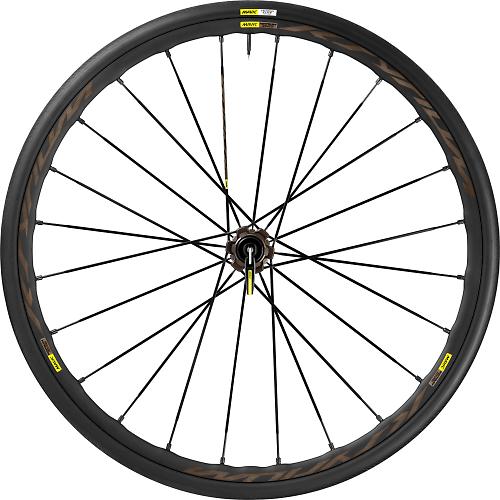
The Pro Allroad uses a brand new 420g ISM 4D rim with no brake track and a 19mm internal width. That means the minimum ISO recommended tyre width is 28mm, but the Allroad is available with a brand new 30mm Yksion Elite Allroad tyre that's specifically designed for multi-surface riding. It's a UST tubeless system, and the rim is fully sealed straight out of the factory. There's no need for a rim strip, just add sealant (Mavic recommend 40g) and you're good to go. The tyre features a progressive tread that goes from a slick centreline through a file tread to a deeper, more agressive tread on the shoulders for better traction when you're cornering on unmade roads. The 120TPI casing features a bead-to-bead nylon puncture breaker to guard against trail debris. If you're not going too far off the beaten track you also have the option of the more road-oriented Yksion Elite Guard 28mm tyre, which is non-tubeless.
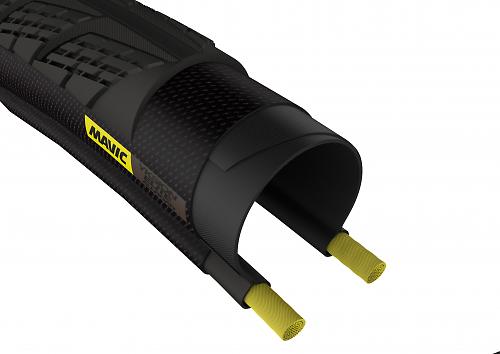
The Pro Allroad uses 24 spokes front and rear. At the front it's a standard two-cross lacing, and at the back Mavic are sticking with their Isopulse lacing which is two-cross on the non-drive side and radial on the drive side. The thinking behind this is that the spokes on the drive side are under higher tension; radial lacing allows them to be more easily replaced if they break, and also they don't have the extra job of transmitting the rider's power. The torque goes through the hub body to the non-drive spokes, and out to the rim.

The hubs on the Pro Allroad have been completely redesigned. As is increasingly the case they've been designed to be compatible with the increasing number of axle standards that are available for road disc. Standard quick release is covered, as is QR15 at the front and 142x12 at the back. And as well as those, the Pro Allroad WTS comes shipped with QR12 front hardware; Mavic seem fairly certain this will end up being the front axle standard, and they're not the only ones we've spoken to who think that. All the different axle kits come in the box, and it's a tool-free process to swap them.
The freehub has changed too. In place of pawls the Pro Allroad has a 40-tooth ratchet drive that Mavic have christened Instant Drive 360. It's 45g lighter and gives a much faster engagement, 9° compared to 17° for the previous hub. Ratchet drive systems are mechanically simpler, and because the rider torque is trasmitted through the entire circumference of the hub, as opposed to just through a small number of pawls, they're hard wearing and efficient too. Plus, they make a really cool sound. Not that that would ever be a consideration in your wheel purchase. Oh no.
The full wheelset weighs in at 1,620g, with the tyres adding 320g at each end. Assuming 40g of sealant and 20g for valves, that's an all-in weight of 2380g without cassette. The Ksyrium Pro Allroad will retail for £750 in the UK, and it'll be available from September.
We've been out for a first ride on the gravel with these wheels, look out for a feature coming up soon.
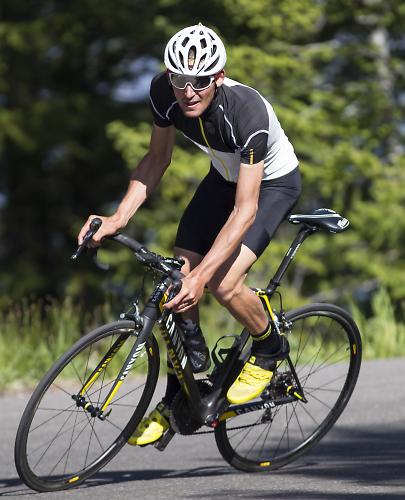
Ksyrium Pro Carbon SL £1,350 - £1,425
The other thing that's brand spanking new is the Ksyrium Pro Carbon SL wheelset, available in clincher and tubular version and with disc or rim braking. "It's designed as a climbing wheel, but it's not just about weight: you need to be able to descend with confidence", Maxime told us. As such, a lot of effort has been put into making the braking performance of the wheels as good as possible.

In its construction the clincher rim borrows the construction method of the Cosmic Carbone 40 wheelset that launched a couple of years ago. It's not a full carbon rim: there's an 80g alloy insert that forms the bed of the rim, and the hooks for the tyre bead. It serves two purposes. Firstly, it ensures a good even fit for the tyre, something that's easier to do with an aluminium extrusion than it is with carbon layers. And secondly, it dissipates braking heat more efficiently through the structure of the wheel.

Even with the insert, the rim is light: 405g is the stated weight. The tubular version of the rim doesn't have the insert, and doesn't have to cope with the load caused by the tyre bead, and it's 100g lighter as a result.
Mavic hand-finish the braking surface on every pair of CC40 wheels, but for the new Ksyrium Pro Carbon SL they've developed a laser machining process that fine tunes the surface of the rim track for even and consistent braking. They claim that with their new brake track and the Mavic brake pads, stopping distance is 48% less than some of their key competitors. They didn't say which.
What with UCI disc brake test events coming soon, and Mavic being a neutral service provider, it's no suprise that the Ksyrium Pro Carbon SL is also being offered in a disc build. Both disc and non-disc versions of the wheelset get updated hubs with the Instant Drive 360 ratchet freehub, and interchangeable axle standards for the disc wheels. The non-disc versions use 24 steel spokes in a Isopulse lacing at the back, with 18 radial spokes on the front wheel. The rear lacing is the same for disc wheels, but at the front there's 24 spokes, laced two-cross to cope with the braking forces.
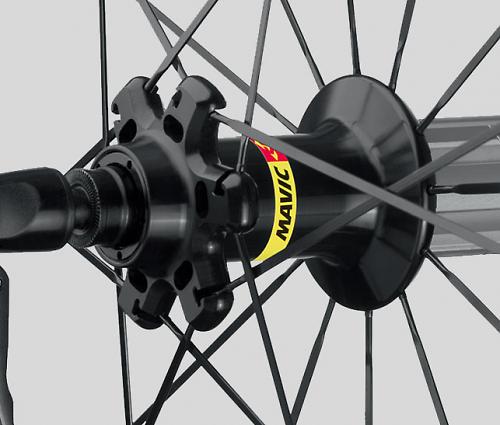
The extra weight of the hub, and the extra spokes, mean that disc wheelsets carry a 130g weight penalty over non-disc, and that's before you slap a rotor on them. The Pro Carbon SL-C clincher weighs in at a claimed 1,390g, with the disc version at 1,520g. The Pro Carbon SL-T tubular is 1,190g, and 1,320g for the disc wheels. Six-bolt and centerlock rotor mounts are both available, and all wheels come with Yksion Pro GripLink (front) & PowerLink (rear) tyres as standard, in clincher or tubular depending on your rim choice. The Ksyrium Pro Carbon SL-C wheels aren't tubeless-compatible.
The clincher wheelsets (rim and disc) will retail for £1,350 and the tubular sets are £1,425. Tubulars will be available first, in July, with the clinchers following in September.
The eagle-eyed among you will have noticed that the Ksyrium Pro Carbon SL-C isn't as light as the £1,450 Ksyrium R-SYS SLR which tips the scales at a feathery 1,295g. Given that, and the excellent braking you get from Mavic's Exalith braking surface, why go for the carbon wheels? Well, it's a different kind of wheel, says Mavic brand ambassador and Col Collective supremo Mike Cotty. "It's a very responsive wheel", he told us. "My go-to wheel has been the Cosmic Carbone Ultimate, but the Pro Carbon SL brought a smile to my face. In the mountains I found the comfort levels to be very good too, better than some of the alloy wheels I've used". That might be down to the wider profile rim and 25mm tyre, or it might be an inherent wheel property thanks to the rim construction and steel spokes. The tubular version is lighter than the R-SYS SLR of course, and that's the one that'll be hanging from the back of the Mavic motorbikes. If you're on clinchers, though, the alloy wheels still have it on weight.
We've had a go on the Ksyrium Pro Carbon SL-Cs too, so watch out for that riding feature coming soon.

Ksyrium Pro and Ksyrium Elite updated
The Ksyrium Elite (1,550g, £500) is available now and has been overhauled with an updated 17mm wide ISM 4D rim. It's built with double butted steel spokes and comes with Yksion Pro GripLink and PowerLink tyres. It's available in black, or with blue or red hub body and spoke nipples to match your bike. Assuming your bike is blue, or red.

Above that the Ksyrium Pro (1,475, £675) is also updated with an ISM 4D rim. It has lighter Zircal spokes, although it doesn't get the new Instant Drive 360 freehub. It'll be available to buy in July. Again, you get Yksion Pro GripLink and PowerLink tyres as part of the package.
Road disc range now six wheels deep
The new Ksyrium Pro Allroad and Pro Carbon disc wheels, and some tweaks to the other wheels, gives Mavic a road disc range that spans most budgets. At the bottom end the Aksium Disc (1,965g, £160) will remain in the range unchanged. The next step up is the Ksyrium Disc (1,850g, £320) which comes with Yksion Elite tyres. It has a QR15 compatible front hub and Centerlock and six-bolt variants. It's available from September.
Above that sits the Ksyrium Pro Disc (1,535g, £675) which gets an disc-specific ISM 4D rim, Zircal spokes and full axle compatibility on the hubs. The Ksyrium Pro Allroad Disc (1,620g, £750), the Ksyrium Pro Carbon SL-C Disc (1,520g, £1,350) and the Ksyrium Pro Carbon SL-T Disc (1,320g, £1,450) we've already covered.

Stay tuned for a first ride report on the new Ksyrium Pro Allroad Disc and Ksyrium Pro Carbon SL-C wheels...
Dave is a founding father of road.cc, having previously worked on Cycling Plus and What Mountain Bike magazines back in the day. He also writes about e-bikes for our sister publication ebiketips. He's won three mountain bike bog snorkelling World Championships, and races at the back of the third cats.
Latest Comments
- wtjs 1 min 58 sec ago
Having had first hand experience with the Lothian section of Police Scotland, it wouldn't surprise me if the "suitable advice" was 'don't get...
- wtjs 5 min 14 sec ago
I think my favourite performance of his is as the photographer in People Like Us TV series...
- Miller 9 min 18 sec ago
Other reviews have done though. They're the shoe equivalent of trying to mount a fresh-out-the-box Challenge folding tyre. But like the Challenge...
- Hirsute 15 min 35 sec ago
Out earlier in the car, NSL very windy....
- john_smith 29 min 12 sec ago
"Dehumanises"? A relatively small number of very bad drivers isn't society.
- brooksby 34 min 28 sec ago
Good lord! You mean he didn't??
- john_smith 38 min 3 sec ago
It's certainly generating plenty of hate.
- Zjtm231 44 min 58 sec ago
Cyclists are obviously famous for not eating in restaurants at all....
- Jimthebikeguy.com 47 min 43 sec ago
Best bike I ever owned, slightly odd spec in retrospect (52/36 chainrings, qr back end but 15mm thru axle front) but it was ace. It died in a crash...
- andystow 1 hour 7 min ago
If there is such a design criterion, surely it will be in the DOT/Snell/BS etc. tests they'll subject it to.













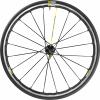



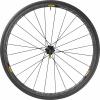



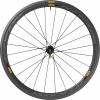


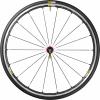
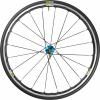

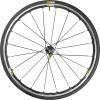
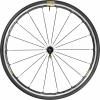
Add new comment
8 comments
My new Hunt 30 CAd wheels are 21 mm internally as well. They're brilliant. With 28 mm Conti's, there's very little light bulbing of the profile.
Great to see something new from the yellow giant.
The gravel wheels seem cool.
"gravel wheels". Jesus. They're just wheels!
I used to have some SLR R-SYS wheels which flexed like they were made of plastic cheese - how do the new carbon wheels compare?
have they got shot of those stupid round carbon spokes !!
Are you sure about the 17mm width being 'not as wide as some'? Most 'wide' wheels will be around 16-17mm internal width but around 25mm at the brake track, see the specs of ZIPP firecrests here:
http://zipp.com/wheels/404-firecrest---carbon-clincher/#
A decent internal width for a road wheel is now 19mm, but this often only leads to an external width of 22-23mm. 2mm wide brake track is thicker than you think.
My HED Belgium+ rims are nearly 21mm internal width, so "not as wide as some" seems pretty accurate.
I'm testing some Reynolds ATR wheels at the moment, they're 21mm internal width and that's about as wide as gravel wheels go at the moment. 17mm isn't that wide by comparison.